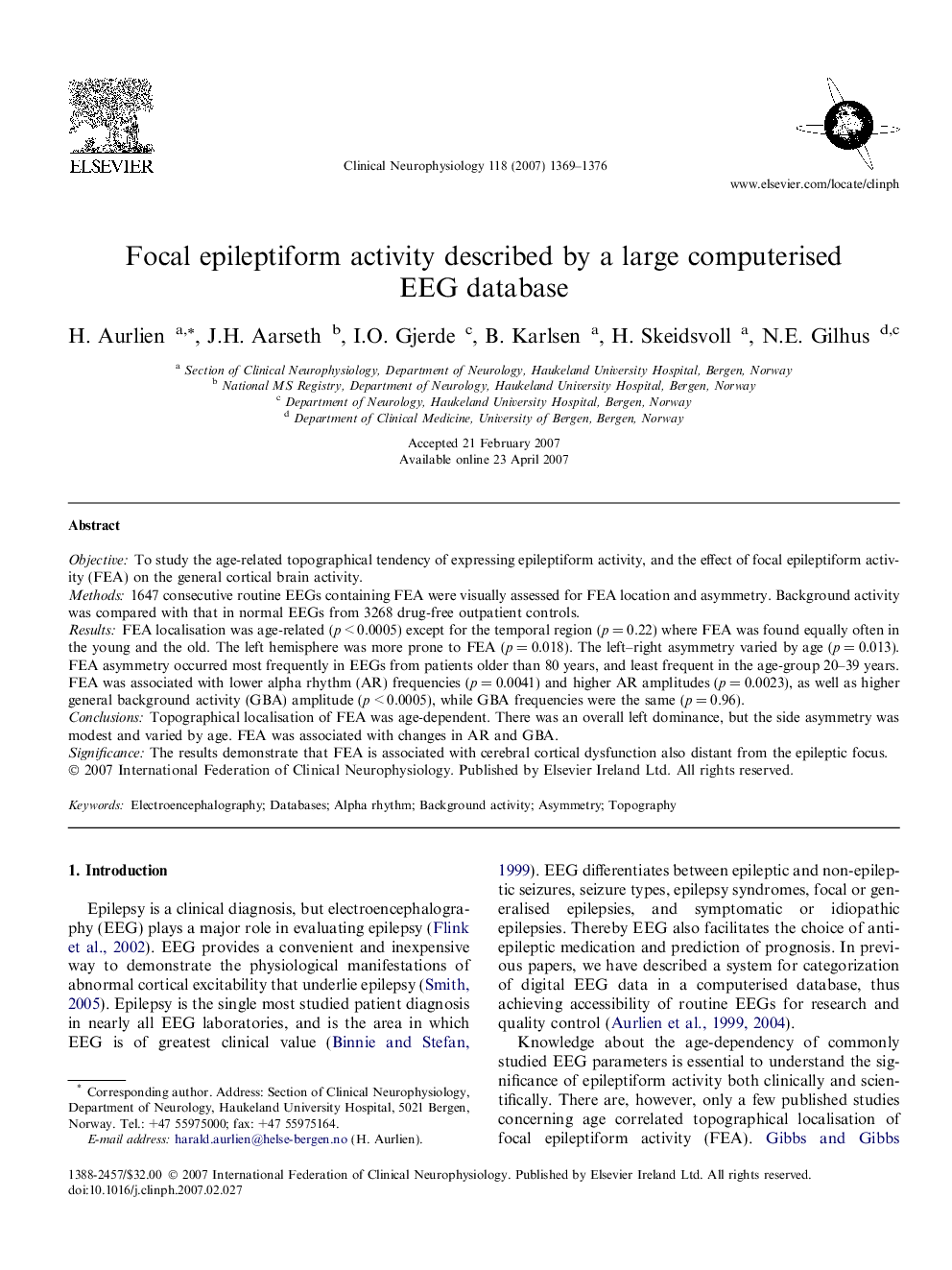| Article ID | Journal | Published Year | Pages | File Type |
|---|---|---|---|---|
| 3047712 | Clinical Neurophysiology | 2007 | 8 Pages |
ObjectiveTo study the age-related topographical tendency of expressing epileptiform activity, and the effect of focal epileptiform activity (FEA) on the general cortical brain activity.Methods1647 consecutive routine EEGs containing FEA were visually assessed for FEA location and asymmetry. Background activity was compared with that in normal EEGs from 3268 drug-free outpatient controls.ResultsFEA localisation was age-related (p < 0.0005) except for the temporal region (p = 0.22) where FEA was found equally often in the young and the old. The left hemisphere was more prone to FEA (p = 0.018). The left–right asymmetry varied by age (p = 0.013). FEA asymmetry occurred most frequently in EEGs from patients older than 80 years, and least frequent in the age-group 20–39 years. FEA was associated with lower alpha rhythm (AR) frequencies (p = 0.0041) and higher AR amplitudes (p = 0.0023), as well as higher general background activity (GBA) amplitude (p < 0.0005), while GBA frequencies were the same (p = 0.96).ConclusionsTopographical localisation of FEA was age-dependent. There was an overall left dominance, but the side asymmetry was modest and varied by age. FEA was associated with changes in AR and GBA.SignificanceThe results demonstrate that FEA is associated with cerebral cortical dysfunction also distant from the epileptic focus.
